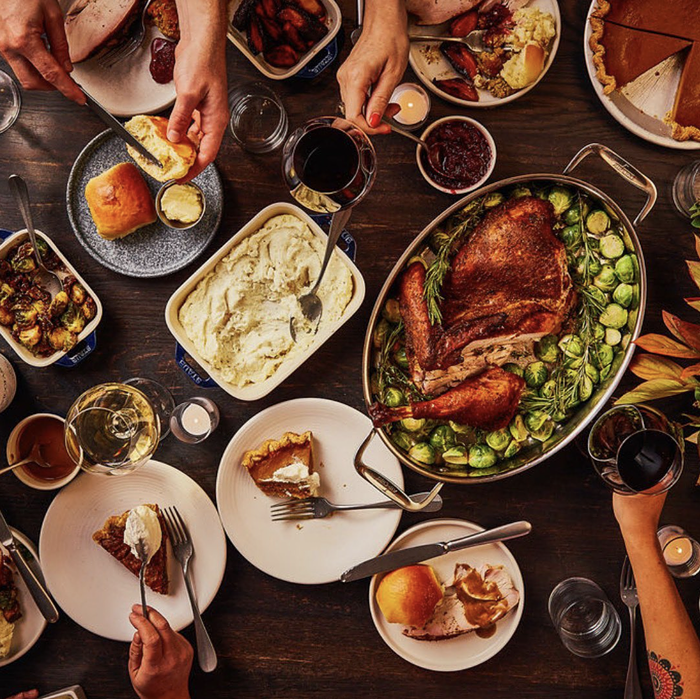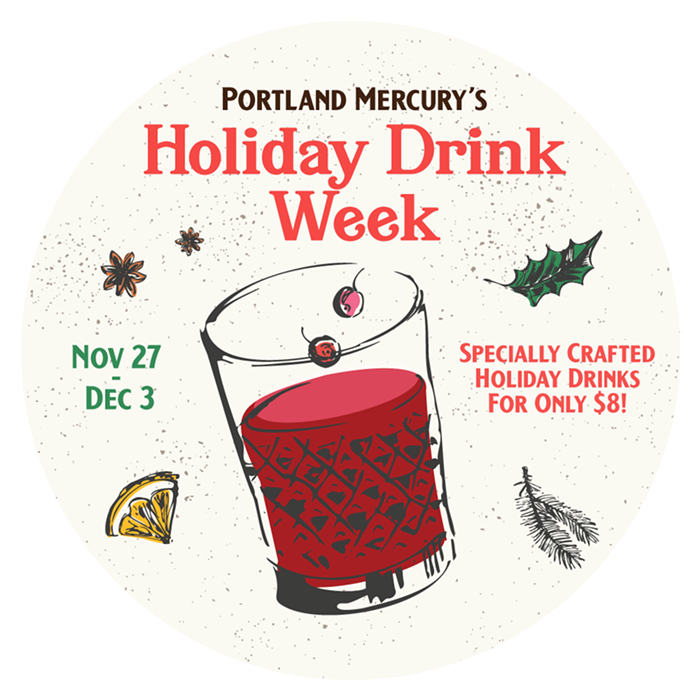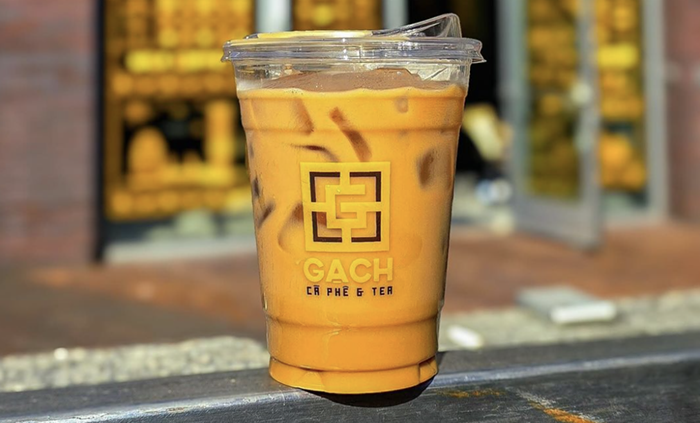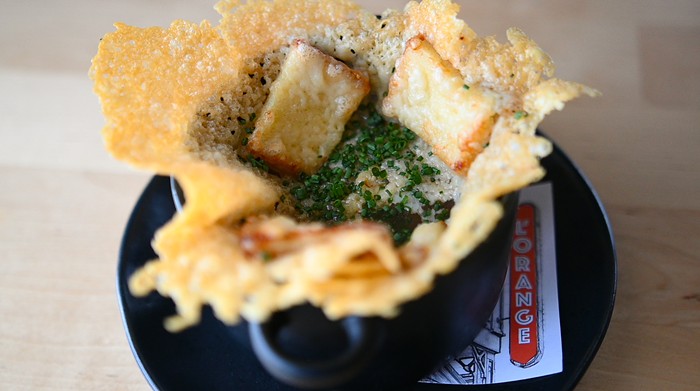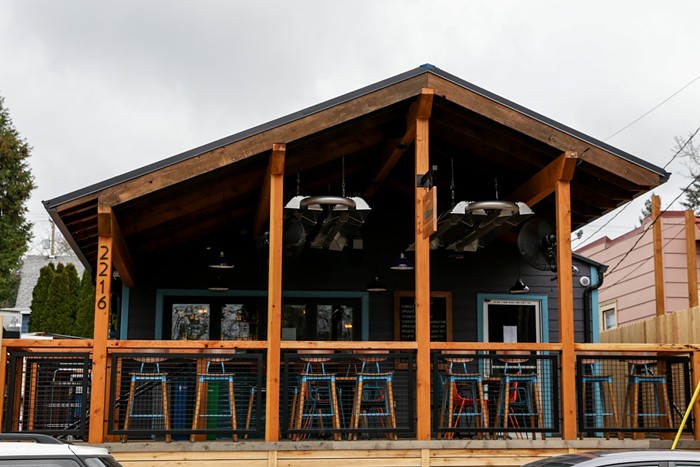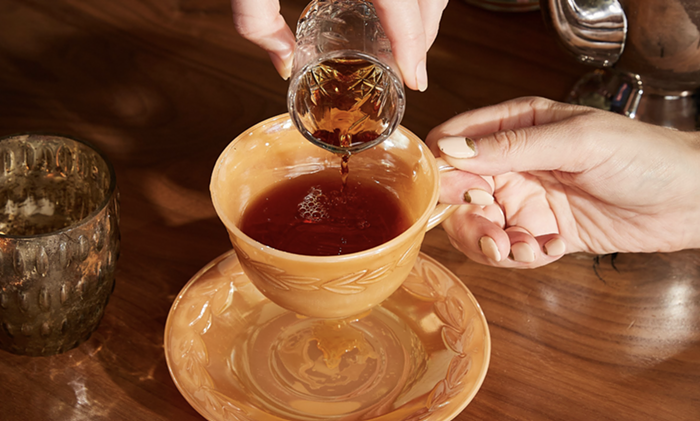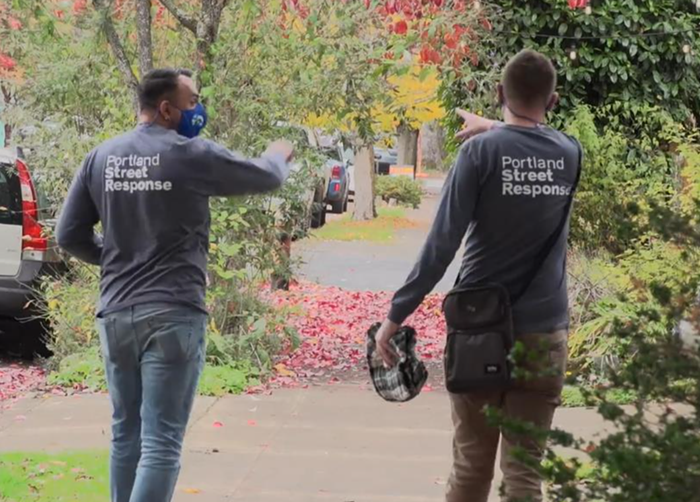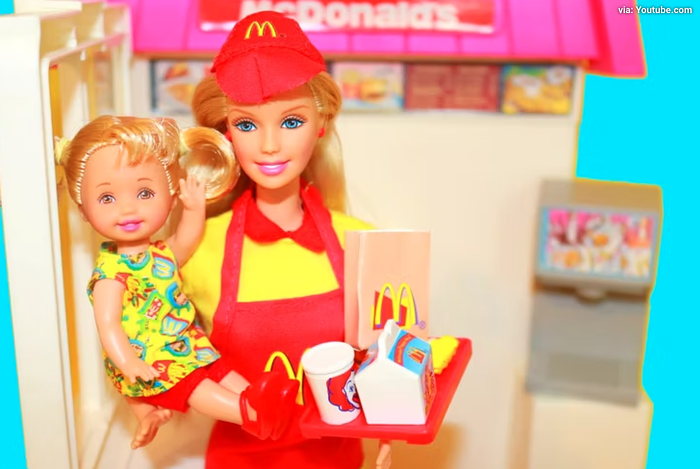Through the Drinking Glass: The Portland Mercury’s Bar Issue
Including 13 Portland Spots That Offer More Than Just Hooch
Cuckoo for Cocktails
Geeking Out on the Wild, Obsessed, and Otherwise Nerdy World of Mixing Drinks
The Last Straw
Why Local Bar Owners Are Getting Rid of Single-Use Plastic Straws
Dry Drinks Worth Diving Into
Non-Alcoholic Beverages You Don't Have to Be a Teetotaler to Enjoy
Stopping by the Bar on a Snowy Evening
Bar Crawling East of 82nd During a Snowpacalypse
There’s a cocktail legend that claims Henry Ramos had a team of dozens of “shaker boys” at his Stag Saloon in New Orleans, and each shaker boy’s sole job was to shake the hell out of a New Orleans Fizz. Making the egg-white and cream cocktail required exceptional core strength, with each boy passing it to the next only when his arms could no longer shake, like some horrific, Orwellian Shake Weight commercial.
The result of this dystopian assembly line, however, is the pinnacle of the egg-white-fluff family of drinks–tall, creamy, texturally somewhere between meringue and a very thick fog.
Seeing a proper Ramos Gin Fizz mixed, served, and sipped is often otherworldly, in the way that any attention to and reverence for something trivial transports you to another world, where one unexpected thing matters more than anything else.
The way gamers live their avatars or swingers live their libidos, some bartenders–the real geeks behind the stick–sometimes appear to live their cocktails. Watch a bartender make a Ramos Gin Fizz. Is there a sigh of resignation when you order it, or do they have the swole, slavering hunger of a gym rat on arm day? More importantly, when it arrives, how far does your jaw drop?
At the Waiting Room, a New Orleans-inspired bar in a huge old house on Northwest Kearney, your jaw will drop like the neon pelicans on the sign outside. Peeking over the glass in a perfect cylinder like a Push-Up Pop, and with a boozy Creamsicle flavor to match, it’s subtler and less sweet than either of those ice creamy treats ($14).
Of course, a bar claiming Big Easy heritage would be nothing without a solid rye-whiskey Sazerac, the storied granddaddy of American cocktails. The Waiting Room’s basic Sazerac is made with Peychaud’s bitters and Herbsaint (an 80-year-old New Orleans absinthe substitute, anise-y and a little sweet), and served on draft—unless you want something fancier than George Dickel rye whiskey (but for $7 at happy hour, Dickel will do).
The cocktail on draft is harder than it sounds, and less gimmicky. It allows a simple, classic cocktail like the Sazerac to be served at the perfect proportions every time, but can also allow control over texture and temperature. Try drinking an old fashioned not poured on nitro after drinking the velvety smooth one at Buckman Public House in Washington High School.
Have you ever seen a mimosa you could look through like a glass of water? At Buckman, to get certain corrosive or abrasive ingredients safely through the tap lines, they use a process of fining and then actually spinning ingredients in a centrifuge until they’re completely transparent. The best batches achieve the clearer-than-water look of gin, with a texture to match, without ever losing the intense brightness of fresh orange juice ($7).
Beyond the mad science, you’ll also find your everyday cocktail-ingredient nerdery on display at Buckman. (You’re in a school, after all.) If, like me, you’re curious about an ingredient like Cappelletti Pasubio and order the 52 Tunnels, you may be in for a lesson not only on Pasubio—an amaro in the alpine tradition that tastes a bit of spiced berries—but also on the military history of the Pasubio region of Italy and the 52 tunnels the Italian army dug to build a supply route through the mountains. Meanwhile, the cocktail lets its obscure ingredient star in the show, nestling in between sherry and everyone’s favorite Ryan Reynolds-owned gin, Aviation ($13).

Only a short jaunt down the street from Buckman, the geekery continues at Trifecta Tavern, home of wood-fired everything, even cocktails. Yes, Trifecta has even found a way to use their beautiful wood-burning oven at the bar, with a handful of seasonal cocktails infused with charred wood of different varietals, like orangewood or red oak.
A recent favorite of these is a charred, maple-infused Tipperary cocktail. The drink trades the traditional green Chartreuse for génépy, a simpler liqueur made with the same basic herb as Chartreuse, but otherwise features Irish whiskey and sweet vermouth, sealed together by the smoky maple, with a very fireside-in-the-cabin feeling ($12).
Trifecta also infuses an applejack with brown butter for an old fashioned cocktail, and even features a bone-marrow whiskey in another, dipping into a wild-eyed mixological alchemy that borders on the occult. But the truest genre of cocktail geekdom—and arguably the most basic—is just loving an ingredient and seeing what it can do. Sometimes it takes cues from the food, like the Taro Reader at Vietnamese spot Hem 23, a taro and cachaça cocktail that looks like the lilac clouds at the top of the sky when the sun starts to set ($11). Sometimes it’s geographical, like the almost entirely Washington-made spirits list at Grocery Cocktail and Social up in Vancouver, where you can drink Amaro Amorino from Letterpress Distillery or a champagne cocktail with Sound Spirits’ Blekksprut aquavit ($10). And of course sometimes it’s just Tiki, the geekiest subclass of cocktail bar.
This is the beauty of the cocktail bar and why I’ll always prefer a cocktail to a beer or a glass of wine, no matter how much I love beer and wine, and no matter how reliable they are when a cocktail fails spectacularly. Once you’ve found those genuine nerds, those that either love shaking a Ramos Fizz or have engineered some way around it (okay, a milkshake mixer does a good job and isn’t that mad-scientific)—the bartenders you trust enough to start saying, “Make me something new”—you get to see the craft and the curiosity of mixing a drink in real time, and there’s nothing better than that.
